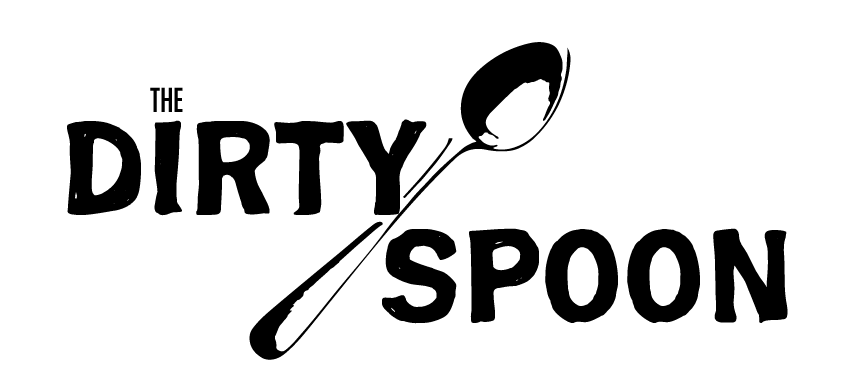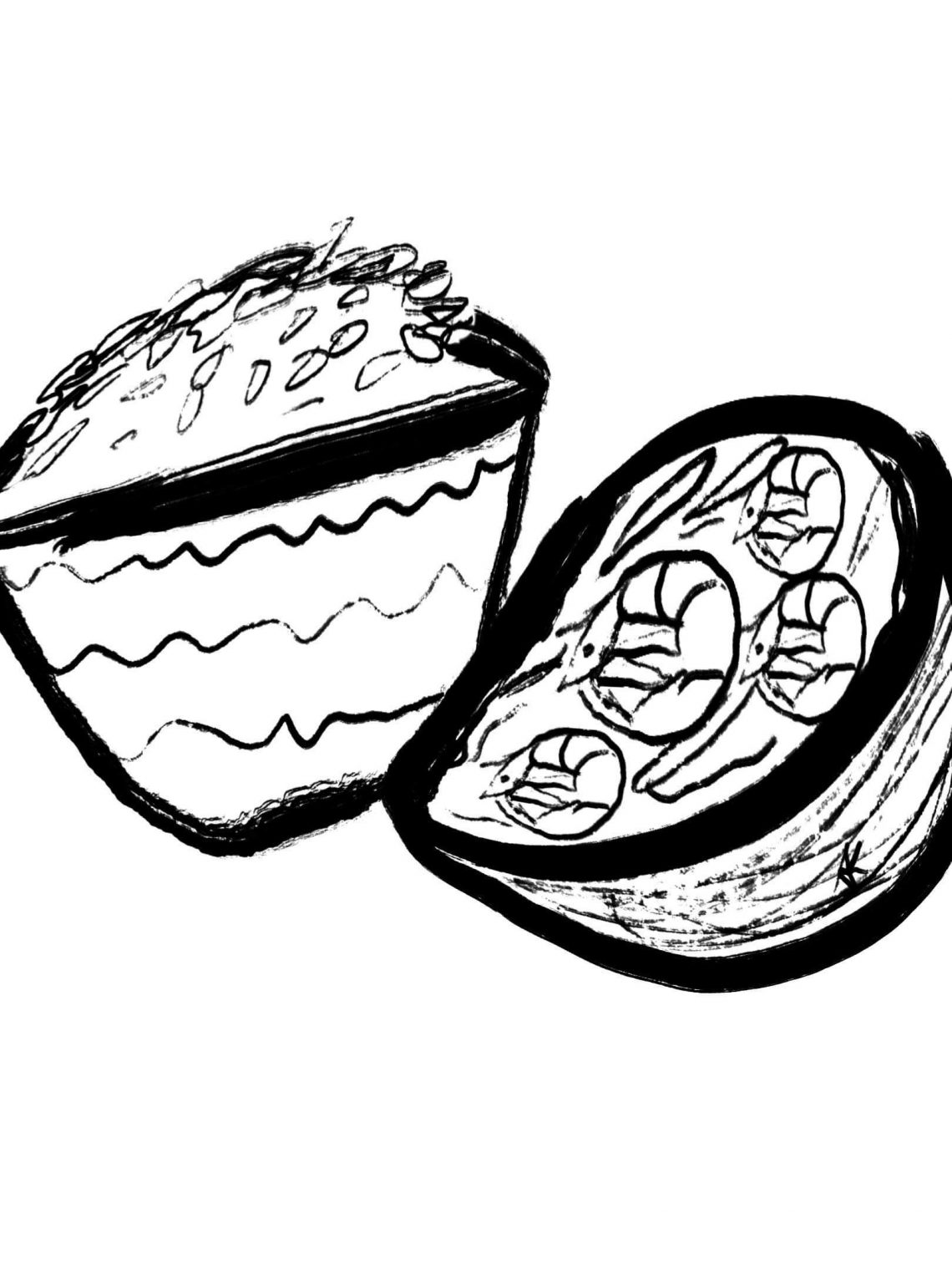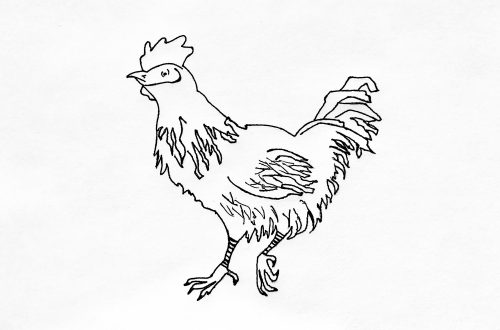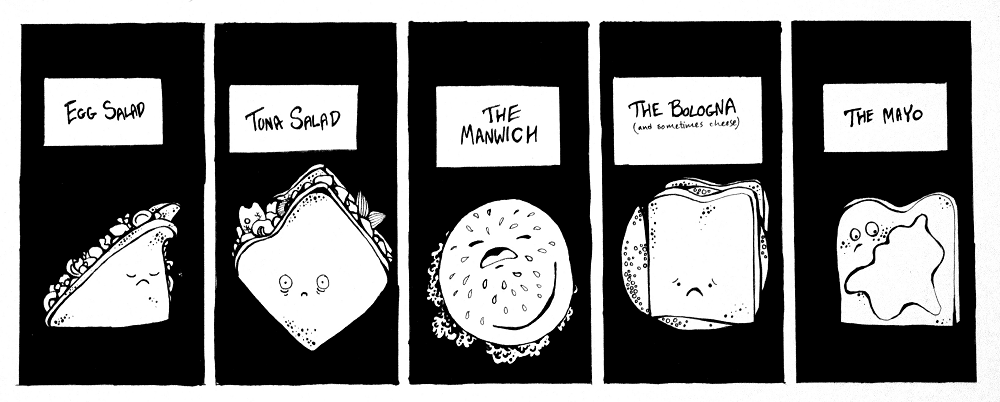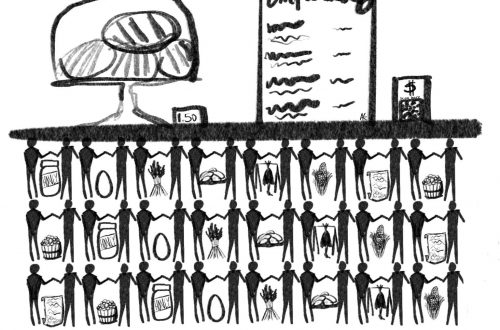by Jamie Burke
Jamie’s essay is featured in episode 46 of The Dirty Spoon Radio Hour.
The Way to A Man’s Heart is His Stomach… But What About Mine?
Ask me to make a Russian borscht, and I’ll raise my purple-stained hands up in the air. Irish Guinness stew? One can for me, one for the pot. Dutch Hagelslag on toast? You had me at Hallo!
But Filipino food? Sure, I’ve eaten it my entire life. Yet I’ve never cooked it.
Growing up in a house with my Lola (grandma), Lolo (grandpa), mom, Ate (older sister), three Titos (uncles), one Tita (aunt) and my cousin, I never really worried about where my next meal would come from because it was always just there. Chicken adobo. Pork menudo. Fried tilapia. The dreaded Dinuguan, a stew consisting of various offal in a bed of pork blood. My Lola, without fail, had dinner ready for all of us every single night.
But all I wanted to eat as a child was Pizza Pops (pepperoni and bacon, or, if I was lucky that week, three meat), s’mores Pop-Tarts and chocolate milk. I would enjoy a bowl of Champorado, a chocolate rice porridge (evaporated milk was optional), but it would pale in comparison to the Cinnamon Toast Crunch that I longed for. The first meal I ever cooked by myself was when I was 12 years old and made a “Hobbit’s Breakfast” inspired by Pippin from Lord of The Rings, consisting of soggy, undercooked bacon and frozen perogies.
I did have one responsibility in the kitchen though, and arguably the most important one in a Filipino household – cooking the rice. My Lolo had taught me the way: wash the rice until the water runs clear, put the rice in the cooker in an even layer, then cover with water. How much? You touch the surface of the rice, and as soon as the water reaches the line of your second knuckle, you’ve got it.
I wonder what he would think if he saw me measuring three and a half cups of water for every two cups of rice today.
Why did I run away from the cuisine of my culture? What was so wrong with Filipino food?
Let’s blame Hugh Grant.
Notting Hill was, and still is, one of my favourite films. A classic love story between the soft-spoken bookstore owner William Thacker and the effervescent Anna Scott, otherwise known as Julia Roberts. Not once did Hugh Grant’s character eat a bowl of rice.
My crushes growing up varied but they all had common characteristics: they were cute, had tousled hair and were undeniably White. Josh Hartnett. Orlando Bloom. Any boy on the cover of J-14 Magazine that month. There were never any Asian boys on the cover of J-14 Magazine at the time.
My dating life followed a similar pattern.
I was with a Chinese guy for a long time, but he was half-Chinese / half-Dutch and always seemed to dissociate from the Asian side of himself. Growing up, whenever his Grandma and Grandpa (who ran a Chinese restaurant) made dinner, they always had to order him a pizza on the side.
After him came The Russian. We were co-workers. My desk happened to be near the kitchenette so I devised a fool-proof plan to get his attention. I spent the previous evening peeling purple beets, browning beef and chopping up dill to make a perfect pot of borscht. And coincidentally, of course, I was eating the aforementioned borscht while he was warming up his lunch in the microwave the next day. I asked him for his feedback on my recipe, as I not-so-innocently passed him my spoon. I wasn’t expecting him to say, “It needs more cabbage”. Nevertheless, he was my boyfriend two months later.
Eventually I met my husband, Eddie. Growing up in Dublin, he gave up a lot in order for us to be together and build a life in Canada. In return, I’ve learned to make Guiness stew with cheddar dumplings, sourced out all our local butchers for black pudding to cook a classic Irish Fry for breakfast and converted from my beloved Cream of Earl Grey to Barry’s Tea.
Throughout my adulthood I never thought much of Filipino food outside of family gatherings, which was the only place I would find myself eating it. I thought I had left that part of myself behind. I thought I had finally made it as a so-called Canadian.
Then my Lola died.
She never spoke much English. I can only remember a handful of conversations we ever had together. But I can still taste her cooking in my memory.
There was one dish in particular she made that I had loved the most: full head-on shrimp swimming in a broth of coconut milk, ginger and garlic. I would fill one bowl with rice, the other with the shrimp. As I gleefully sucked the heads off the shrimp with one hand, I would peel the meat off the shell with the other and eat it with a handful of rice. I would scoop this all into my mouth using my fingers. I didn’t even know what it was called – only how it made me feel. It was one of those rare moments when I truly felt Filipino.
After my Lola’s death, I knew that I wanted to make this dish myself. Yet I waited for almost an entire year before I did. After a lifetime of rejecting Filipino culture, would it welcome me back?
Eventually, I would FaceTime my mother one evening and ask her what the name of the dish was. “Ginataang Hipon?”, she said, as if the question was as simple as asking for the time. I asked her how Lola used to make it. She said she didn’t know; Lola never used recipes. So with some help from Google, I was able to put together an ingredient list and recipe. 45 minutes later, dinner was served.
It definitely didn’t taste like my Lola’s. The shrimp were too big, the broth a bit too liquidy. It would take time and effort to get the recipe right. But sitting at the table that night, watching my husband eat with his bare hands, both my heart and stomach were full.
Original artwork by Alex Knighten
About the Author
 Jamie is a content marketer with years of real estate industry experience in several sectors, having graduated from UBC’s Diploma of Urban Land Economics program. From development land sales to strata wind-up, Jamie’s seen it all: she’s truly a marketer who knows the market. She is a wordsmith, organizational force, and a home cook extraordinaire.
Jamie is a content marketer with years of real estate industry experience in several sectors, having graduated from UBC’s Diploma of Urban Land Economics program. From development land sales to strata wind-up, Jamie’s seen it all: she’s truly a marketer who knows the market. She is a wordsmith, organizational force, and a home cook extraordinaire.
